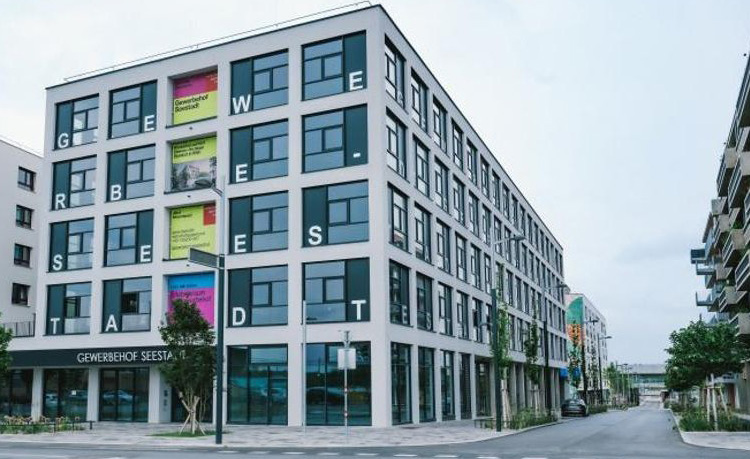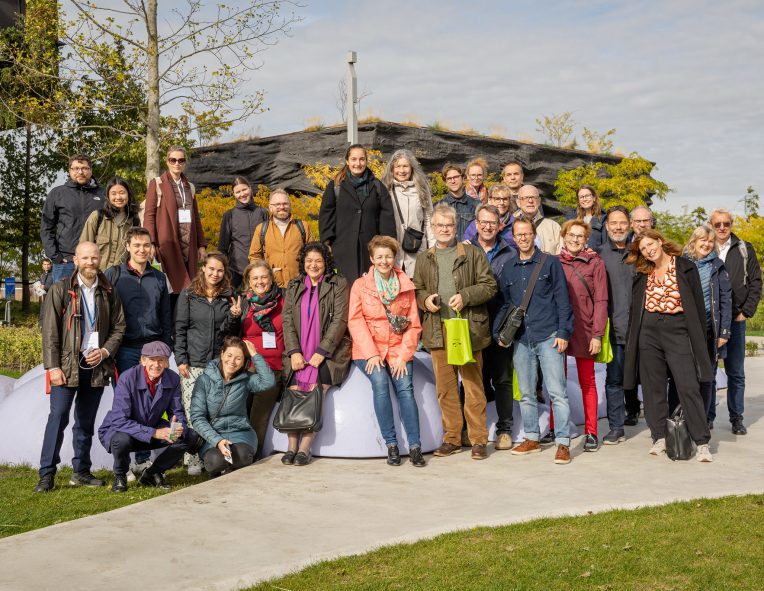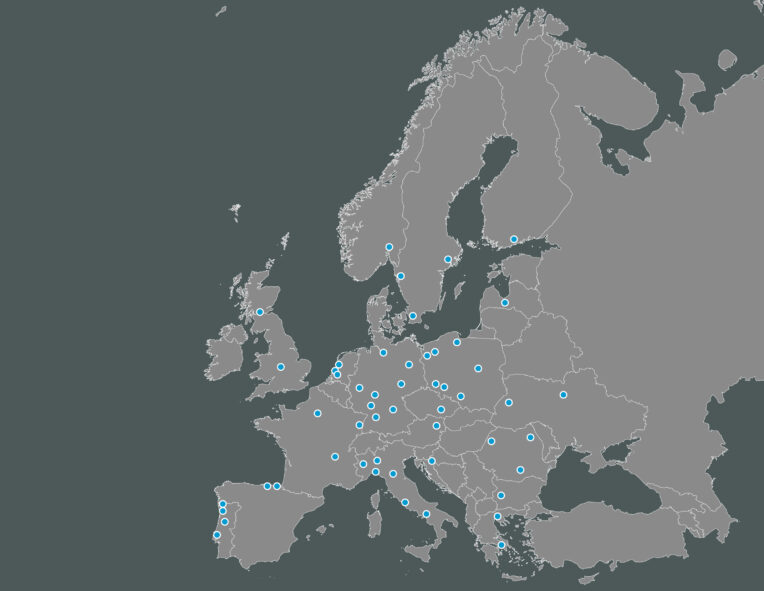14:00-16:00 CET
The METREX Productive Cities Expert Group has met in March under the coordination of Adrian Hill to continue its exploration into making space for re-introducing production in cities.
Over the last two years the group has looked at a number of very interesting case studies in Amsterdam, in The Hague, in Oslo and in various French cities. We also looked at Manchester and the economic clustering of productive activities. A red line between these projects has involved the business models and financial tools available to public authorities to create mixed-use spaces.
Preparing the conclusive phase of this journey, we turned to Vienna, which adopted the Productive City Sectoral Plan in 2017, detailing Vienna’s overall 10-year urban development strategy “Stadtentwicklungsplan STEP 2025”. In this session Michael Rosenberger, Senior Strategic Planner at the City of Vienna, reported and reflected on the Viennese experiences of the last years.
Figures show that the Capital City of Austria has been losing spaces for productive activities. The existing areas are currently operating at full capacity and land prices had become too high for many economic activities. A warning was launched by the economic sector already a decade ago pointing at the contraction of spaces left for production and industrial activity[1] , in a context of rapid population growth.
At that time the city planning department periodically reviewed its development perspectives and strategies. And in 2014 Vienna’s City Council updated its general urban planning strategy “Stadtentwicklungsplan STEP 2025”. This document initiated the development of a series of sectoral plans to guide a range of issues like urban mobility, green spaces, the public realm and urban centres. The City Council also ordered the planning administration to prepare a sectoral plan targeting the productive sector, a novelty for Vienna.
The purpose was twofold: maintain the existing productive landscape supporting the industrial activities in the current locations and help them thrive. As a tool, three productive land-use typologies were identified:
- Industrial and commercial areas (“red zones”): reserved exclusively for industrial and transport intensive uses
- Commercial mixed-use areas (“pink zones”): existing industrial sites close to good public transport, often very integrated in the urban fabric (10% of productive land) that can be upgraded and complemented with different uses.
- Integrated small heritage sites which can be redeveloped but must permanently offer floor-space for productive purposes
According to Michael, the fact alone that this topic was widely recognized and understood at the city level is a great success. The necessity of looking after the productive uses with the aim to protect their existence within the urban core areas, had turned the public ambitions into a policy document.
Given this scenario, what happened?
Since 2017, the red zones work rather well. Proposals for zoning variations to introduce other functions (mainly housing) were significantly reduced, the land price level stabilized and the prospects of companies in these areas improved.
On the contrary, the pink zones suffered from a series of problems which led to a limited use of the redevelopment opportunities: in 2018 – only one year after the adoption of the plan – changes in the housing law required that 2/3 of all new housing construction must be subsidized – severely limiting the profitability of additional housing in pink zones. The majority of proposals stalled; some developers hoped for possible changes of the policies in the future. Extremely low interest rates made waiting feasible. Also, the prospect of developing significant amounts of housing (50 to 70% of the floor area generated) attracted housing developers lacking the skills and knowledge to build true mixed use or commercial projects. “Our own experiences and those of other cities made us doubt that actors and conditions able to produce mixed-use projects – combining housing and productive purposes – exist”, is Michael’s conclusion.
Having observed the process ignited by the first Productive City strategy document (2017), the City is now reviewing its policies. There is a need for reform in some details. Nevertheless, a firm and clear signal to the land and development market will be equally important.
What about Mixed use – why and for whom?
And how does it work in Vienna?
From the analysis of the observed dynamics, the Red zones are a success, also due to the fact that they were intentionally not allowing residential and higher order city functions like retail and recreation). Many cases, attempting at truly integrate industrial activities with other functions in a meaningful and profitable way, have failed.
From this assumption, a catalogue was made where functions are clustered according to the levels of similarity and ‘mixing capacity’ with the ‘red zones’ characteristics:
- Genuine productive activities such as crafts and workshops, industrial goods production, logistics, warehouses, laboratory space, wholesale, energy systems, repair and maintenance, circular economy activities, data centres/IT, construction industry are welcomed and encouraged to move in.
- Industry-related services, vocational training institutions, gastronomy, research facilities, start-ups can also be located in other parts of the city, but are still encouraged/allowed into the industrial areas.
- Residential uses (also in any other form such as hotel, serviced apartments, dormitories, nursing homes), retail, energy production, office buildings, entertainment venues, commercial garages and agriculture, are more or less declared ‘no-go’ activities. They are either in conflict with the intended functions or consume the land earmarked for the productive purposes.
Limits to mixing?
Mixed use is a very challenging planning scheme, especially if very diverse uses are involved like housing and industry. To achieve success several factors need to be considered. First, we need clarity about our goal: What does mixed-use really mean? As it is very challenging to build and operate mixed-use buildings, we must make sure to understand the product. It needs professionals and consultants to create a mixed-use product that actually works and is at the same time profitable.
Different uses also have different requirements: tolerance or need for emission, propensity for ownership or rental, access requirements, availability of transport services, location, quality of appearance of the public realm surrounding the building etc. For some users these elements are an asset while for others they represent an issue. These conflicting interests limit the possibility of success. Only when the needs of users overlap to a great degree, coexistence is beneficial.
The red zones cater to those who benefit from a rough, monofunctional and less costly environment. Mixed-use schemes proposed in the pink zones are suitable for activities that can be better integrated in an urban fabric and have the capacity and willingness to pay higher rents for their premises. In Vienna pink zones cover about 200 hectares, allowing for an estimated 500.000 sqm of floor area for productive uses to be developed.
But how much of this industrial space in mixed use settings will be absorbed by users?
If we look at real estate market data, we see that developers and owners don’t seem to really accept the mixed-use projects yet in large volumes, showing that urban planners are perhaps somewhat idealistic regarding the demand for this typology.
What Vienna does to support productive functions through planning:
- Establish zones to lay down hard rules:
– to show strong and long-term political commitment,
– provide investment security for the productive companies (that operation would be safe in the long run) and signal the real estate market that speculation for change is useless
– avoid unnecessary or even harmful public investments.
- Regulations:
– Mandate a minimum share of productive space in projects,
– Ensure that new buildings will be suitable for commercial use through legally binding building plan (truck access and lading, minimum hights, floorplans…),
– grant integration of higher value uses and density as incentive,
– align with ESG mechanisms
- Use the power of the public sector:
– mobility: the city provides all kind of transport to shape accessibility (road, rail, public transport, shared mobility),
– energy solutions/transition to electricity and green gas,
– quality of public space
– management and support of pilot projects,
– manage risk/help renting and managing the risk of projects that find hard to respond to market’s conditions.
By recognizing the Productive City as a social value for the society, the City of Vienna underwent a shift in its mind-set. Providing services and workspaces related to crafts, repair and neighbourhood activities by bringing them close to residents, the City also intends to include the right to culture and creativity to the benefit of its inhabitants/users.
Today the City is facing a revision of its policies. There are more challenges emerging that were not so evident ten years ago. The energy transition associated with the renewable energy production, storage and distribution and the circular economy paradigm will all require land. The COVID pandemic fuelled a need for warehouses to stock goods and materials and to respond to a massive shift towards online retailing; furthermore, digitalization and automation transforms the way we use space for the economy and of workplaces.
‘All these mechanisms support our thinking that the idea of the mixed-use pink zones as dense urban commercial and productive areas in cities will be needed as economic drivers for the metropolitan region’ Michael concluded. ‘For all these reasons, and despite we acknowledge that it is and will remain difficult, we confirm mixed-use as one of our main urban planning paradigms’.
[1] – Michael refers of industrial land reduced of about 15/20 hectares per year and transformed in something else
For any question related to this event or the activities’ program of the Productive City Expert Group, please contact Viviana Rubbo



